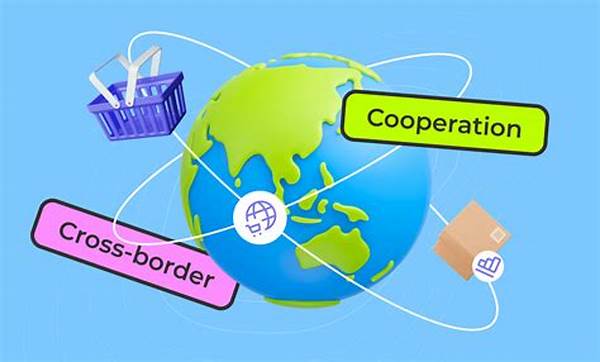The concept of cross-border humanitarian cooperation has gained increasing relevance in today’s interconnected world. As global challenges such as natural disasters, conflicts, and pandemics know no borders, collaborative efforts across countries have become essential. This article delves into the significance, challenges, and future prospects of such cooperation, providing insight into the mechanisms that facilitate aid and relief across national boundaries.
Significance of Cross-Border Humanitarian Cooperation
Cross-border humanitarian cooperation plays a pivotal role in addressing global emergencies by pooling resources and expertise from multiple countries. This collaboration enables rapid response to crises, minimizing the impact on affected populations. Through shared knowledge and resources, nations can better manage disasters, ensuring timely and effective assistance. This cooperative approach not only enhances the capabilities of individual states but also promotes international solidarity and fosters peace and stability in regions prone to conflicts and natural disasters.
Moreover, cross-border humanitarian cooperation strengthens diplomatic relations, offering a platform for countries to engage constructively and resolve differences. Partnerships formed during humanitarian efforts can pave the way for sustained collaborations in other areas, such as trade, education, and technology. As such, the benefits of these humanitarian efforts extend beyond immediate crisis management, contributing to long-term global development and cohesion.
Challenges in Cross-Border Humanitarian Cooperation
1. Logistical Complexities: Cross-border humanitarian cooperation often encounters logistical challenges, such as transportation barriers, which can hinder the swift distribution of aid to affected regions.
2. Legal and Bureaucratic Hurdles: Different countries have various legal frameworks and bureaucratic procedures, complicating the seamless flow of humanitarian aid across borders.
3. Cultural and Language Differences: Cultural and linguistic discrepancies may affect communication and coordination, impacting the effectiveness of cross-border humanitarian cooperation.
4. Resource Allocation: Ensuring equitable distribution of resources and financial constraints can pose significant challenges in executing cross-border humanitarian initiatives efficiently.
5. Security Concerns: In regions plagued by conflict, security risks can obstruct humanitarian efforts, endangering both aid workers and recipients in cross-border operations.
Future Prospects of Cross-Border Humanitarian Cooperation
The future of cross-border humanitarian cooperation depends on increased international commitment and innovation. As globalization continues to influence interconnectedness among nations, there is a growing recognition of the need for robust frameworks to facilitate such cooperation. Governments and non-governmental organizations alike are investing in research and technology to develop more effective methods to overcome existing barriers.
Cross-border humanitarian cooperation is expected to leverage advancements in technology, such as data analytics and communication tools, to enhance the speed and efficiency of aid delivery. Emerging platforms that integrate real-time data sharing and resource management will revolutionize traditional approaches, ensuring more coordinated responses to crises. This evolution not only promises to improve immediate disaster response but also to build resilience in vulnerable communities, enabling them to withstand future challenges more effectively.
Mechanisms Facilitating Cross-Border Humanitarian Cooperation
Mechanisms facilitating cross-border humanitarian cooperation include international conventions, bilateral agreements, and multilateral organizations that provide frameworks for collaboration. These structures help coordinate efforts by enabling resource pooling, standardizing procedures, and fostering mutual trust among nations. International bodies such as the United Nations also play a critical role by offering platforms for dialogue and negotiation, vital for overcoming obstacles in cross-border collaboration.
Moreover, technology-driven platforms have emerged as essential tools in facilitating efficient cross-border humanitarian cooperation. These platforms enable real-time communication, resource tracking, and data sharing, which are crucial for managing complex humanitarian operations across borders. By enhancing transparency and accountability, these mechanisms ensure that aid reaches the intended recipients efficiently, thereby maximizing the impact of humanitarian efforts.
Enhancing Cross-Border Humanitarian Cooperation Through Technology
Cross-border humanitarian cooperation can benefit significantly from technological advancements. Innovations such as satellite imagery and geographic information systems enable more accurate assessments of disaster-hit areas, guiding targeted relief efforts. Additionally, robust communication networks facilitate better coordination among international partners, while digital financial systems streamline resource allocation processes, ensuring swift delivery of assistance.
Furthermore, blockchain technology offers potential solutions for enhancing transparency and trust in cross-border humanitarian cooperation. By providing an immutable record of transactions, blockchain can prevent corruption and ensure accountability in the distribution of aid. Such technological advancements are vital for building resilient systems capable of addressing complex humanitarian challenges effectively, paving the way for more sustainable cross-border cooperation.
Building Capacity for Cross-Border Humanitarian Cooperation
Capacity building is crucial for enhancing cross-border humanitarian cooperation. Training programs that focus on developing skills in emergency response, negotiation, and cultural competency are essential for building effective international teams. Furthermore, investments in infrastructure and logistics are necessary to improve the speed and efficiency of aid delivery. Collaborative research initiatives also play a pivotal role, fostering innovation and knowledge-sharing between nations.
Strengthening institutional frameworks is equally important for sustaining cross-border humanitarian cooperation. Governments and organizations must develop policies that encourage collaboration, streamline bureaucratic processes, and prioritize the mobilization of resources for disaster response. By cultivating a culture of cooperation, countries can ensure that they are better prepared to tackle global humanitarian challenges collectively.
Summary: The Imperative of Cross-Border Humanitarian Cooperation
In summary, cross-border humanitarian cooperation is vital for addressing the complex challenges that transcend national boundaries. Through collaborative efforts, nations can pool resources, knowledge, and expertise to effectively manage disasters and mitigate their impact on affected populations. This cooperation not only enhances immediate crisis response but also contributes to long-term global stability and development.
As public and private entities continue to demonstrate commitment to cross-border humanitarian cooperation, the potential for sustainable global development becomes increasingly attainable. By embracing technological innovations, fostering diplomacy, and building institutional capacity, the international community can create a robust framework for addressing future humanitarian challenges. It is imperative that countries prioritize cooperation over isolation to build a resilient world equipped to face the emerging challenges of the 21st century.





